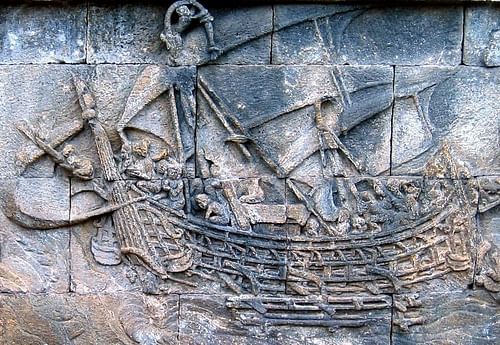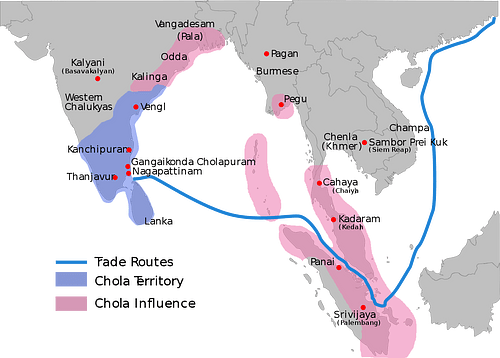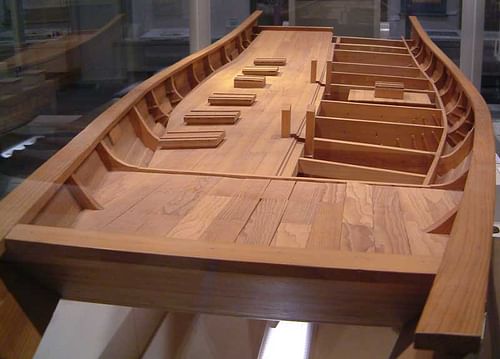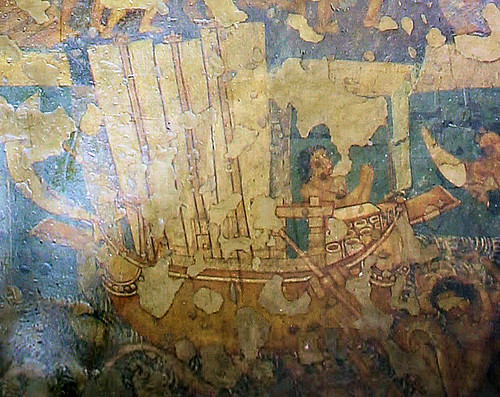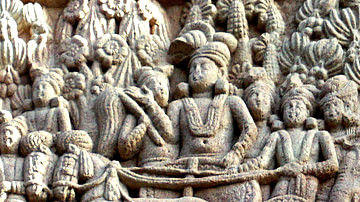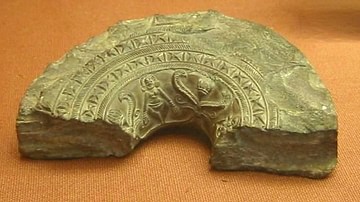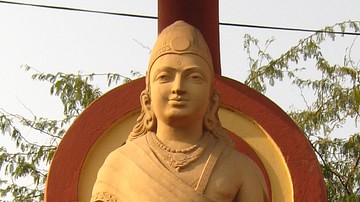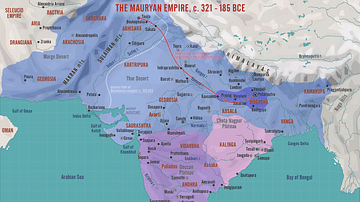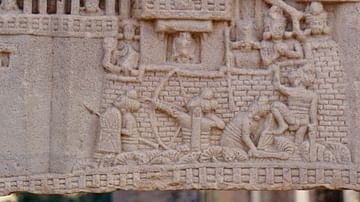The navy in ancient India carried out three roles: it was used to transport troops to distant battlefields, participate in actual warfare, and was primarily meant for protecting the kingdom's trade on sea and navigable rivers and the maritime trade routes. The lucrative and highly developed trade with Egypt, West Asia, Greece, and Rome led to the growth of navies along India's west coast facing the Arabian Sea, and many dynasties ruling in various parts of India also maintained navies to protect the trade being conducted through huge rivers such as the Ganga.
On the east coast facing the Bay of Bengal maritime activities led to colonizing expeditions to Southeast Asia. The navies of the South Indian powers were geared towards launching invasions in Sri Lanka, separated from India by the Palk Straits. The warships were used in battles which, compared to land battles, remained low in proportion. The ancient Indians preferred to fight on land, and fights on sea were not given much importance, except in a few cases where destroying the enemy navy became crucial.
Strategic Significance
The ancient Indian naval ships protected trade and carried troops to war zones. Kautilya (c. 4th century BCE) in his Arthashastra mentions the protection of the kingdom's shipping and destruction of those threatening it, such as pirate ships (himsrika). However, while Kautilya devotes many pages on to how to fight on land and on wartime espionage and siege warfare, he is completely silent on naval warfare. While the army and forts are part of the seven constituents (saptanga) of a king's sovereignty, without which he could not call himself king, the navy is not. The navy created by Chandragupta Maurya (321 BCE - 297 BCE) thus most likely performed these coast guard functions in keeping with Kautilya's views.
In the Mauryan Empire where the 30-member war office was made up of six boards, the first board looked after shipping and was headed by the navadhyaksha (Superintendent of Ships). The navadhyaksha is tasked by the Arthashastra with examining accounts related to navigation and maintaining security over different kinds of water bodies. He is not given any direct military role. No naval battle fought by the kingdom of Magadha (6th century BCE - 4th century BCE), the Mauryas, or any other succeeding dynasty like the Guptas (3rd century CE - 6th century CE), has as yet come to light. Neither do the contemporary works elaborate on or discuss in detail the naval aspect of warfare.
The main aim was thus to protect maritime trade, merchant ships, port towns, and shipping in general. Any naval operation, whenever carried out, would have been very small-scale and on inland rivers rather than the high seas, since the maritime trade of most of these kingdoms was through rivers. The navy, when created by a dynasty based in the landlocked northern or eastern parts of India, does not seem to have been used aggressively or for conquest. In case of the Guptas and later dynasties, ships did exist as part of the army, but their use was much limited and not as extensive as the land forces. They were mostly used to conquer islands, as has been presumed for the campaign of the Gupta emperor Samudragupta (335 CE – 380 CE), or for fighting seafaring peoples as the Satavahanas (1st century BCE – 2nd century CE) did.
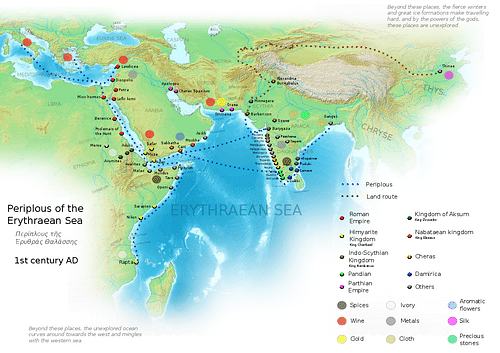
In the western, southern, and (coastal) eastern parts of India, the situation was markedly different. Being situated on the sea coast, the dynasties there relied heavily on maritime trade and the sea and built navies that were used in war. To them, the navy was an essential part of the military establishment along with the land forces. It was in these parts and the adjacent high seas that ancient India saw most of its naval warfare in practice. The most compelling reason was the capture of the highly lucrative foreign trade of the enemy; it was necessary to destroy the navy that protected it. Combined with land warfare, war on the sea became a prerequisite for defeating the seafaring enemy.
The dynasties which had well-developed navies were:
- Mauryas (4th century BCE - 2nd century BCE)
- Pallavas (3rd century CE - 9th century CE)
- Cholas (4th century BCE - 13th century CE)
- Early Cheras (3rd century CE - 9th century CE)
- Later Cheras or Kulashekharas (9th century CE - 12th century CE)
- Chalukyas of Vatapi (6th century CE - 8th century CE)
- Palas (8th century CE - 12th century CE)
Western coast
Local dynasties like the Mauryas of Konkan maintained a navy as well as coastal forts. The navy of the Early Cheras was developed to protect trade as most of the ports involved in international trade, particularly with Rome, fell under Chera territory. This fleet was extensively used in fighting foreign (exact identity unknown) pirates and against the rival kings supporting them. The Later Cheras or the Kulashekhara dynasty continued this naval tradition. Their war fleet was stationed near Kandalur Salai (modern-day Valiasala, Kerala state). Port towns, such as Vizhinjam (present-day Vizhinjam, Kerala state), were also heavily fortified. The Vatapi Chalukyas maintained a vast fleet that was used to transport thousands of troops to the war zones on land.
Southern & south-eastern coast
The Cholas, in time, became ancient India's leading naval power. Beginning with Raja Raja I (985 CE - 1014 CE) who triumphed over the fleet of the Kulashekhara king Bhaskara Ravivarman I (962 CE – 1019 CE), successive Chola kings destroyed the Kulashekhara fleet off Kandalur Salai, conquered islands such as Lakshadweep (part of India) and the Maldives, and sent overseas expeditions to Sri Lanka and Southeast Asia.
The involvement of the South Indian kings with the dynastic squabbles of Sri Lankan kings and vice versa resulted in these kings sending naval expeditions across the Palk Straits to support one or another claimant to the throne. The Pallavas used their harbour at Mamallapuram (present-day Mamallapuram or Mahabalipuram, Tamil Nadu state) for this purpose. The Cholas used their navy to reach the island and went for outright conquest, annexing first northern Sri Lanka, which became a province called Mummadicholamandalam, and later virtually the whole island.
Eastern coast
The dynasties ruling this coast built war fleets and sent out expeditions, and the navy often played a strategic role in warfare. The destruction of their fleet and capture of the island fort by the Vatapi Chalukyas virtually ended the power of the Konkan Mauryas. Naval losses of the Kulashekharas led them to change their strategy against the Cholas and focus solely on land warfare with tactical innovations like the use of suicide squads, thereby neutralizing the naval advantage possessed by the Cholas.
The existence of the navy did not always help either. Despite being the prime maritime power, the Cholas were beaten many times on land by land-based powers such as the Rashtrakutas (8th century CE - 10th century CE) and the Kalyani (Western) Chalukyas (10th century CE - 12th century CE). As these powers existed outside the Chola naval zone of influence and operation, the navy could not be used against them and thus could not help in avenging or preventing the disastrous losses on land.
Ships & crew
The ancient Indians had a good knowledge of the materials, varieties, and properties of wood which went into the making the different classes of ships. The Yuktikalpataru written by King Bhoja (c. 1010 CE - 1055 CE) of Malwa is the only ancient Indian work dealing in detail with the subject of shipping. It mentions a kind of vessel called agramandira, which had its cabins towards the prows and was thus seen as being suitable for naval warfare (rane kale ghanatyaye). One such ship is depicted in the Ajanta paintings (Cave II). It is a seagoing vessel with high stem and stern and has three oblong sails attached to three masts and ports. Steering-oars hang in sockets or rowlocks on the side, with an oar behind.
Ships were single, double, or triple-masted. The mast was known as naudandaka. The shipbuilding harbours were known as navataksheni. Ships were both large and sturdy, equipped with up to a hundred oars, as they had to carry thousands of troops across many nautical miles.
In the Arthashastra there is a mention of large boats (mahanavah) provided with a captain (sasaka), a steersman (niyamaka), and servants to hold the sickle and the ropes and to pour out water. It is quite possible that the same terminology would have been used for naval ships too. The naval ships would have had a number of oarsmen depending on the size of the vessel and warriors who went into combat.
Naval battles
No direct references are available as to how naval battles were actually fought. Based on whatever little evidence is available, as well as patterns of land warfare and ancient Indian warfare in general, some assumptions can be made. It is likely that the ships or boats carried warriors who were equipped with the standard-issue weapons of the period, swords, javelins, maces, and spears. Archers would have been heavily involved in the fighting, shooting fire arrows. The Ramayana mentions men waiting in 500 ships displaying full sail to obstruct the enemy's passage.
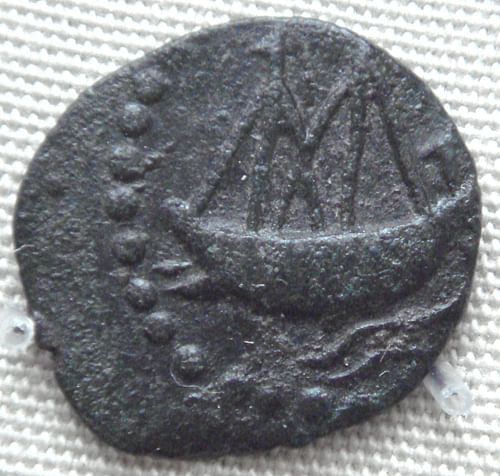
As soon as the enemy ships or boats came in range, soldiers of both the sides could engage in hand-to-hand combat and attempt to jump onto the enemy vessel in order to kill the enemy, destroy their ship, and then return (if still alive) to their own. The main aim was to destroy the enemy ships, as contemporary authors make no reference to capture, unlike in the case of enemy forts and elephants. This destruction was accomplished by breaking the ships or setting fire to them. There is no mention of war engines, but it is likely that some kind of contraption would be on-board to pelt stones on the enemy ships so as to break them. At the first battle of Kandalur Salai, Raja Raja I Chola is expressly mentioned as killing the Kulashekhara or Chera warriors, splitting in two a naval vessel belonging to their king and destroying a number of boats (or ships).
Legacy
Naval developments on the west coast continued well into the medieval and colonial periods, with the dynasties there giving a tough time to their enemies, including the Portuguese and the Dutch. The arrival of the British and their virtually unquestioned naval superiority led the Indian powers to concentrate on fighting on land. The decline of the indigenous Indian navy was then complete. The naval traditions built over time and especially in the ancient period, however, continued to influence the development of the navy undertaken by independent India. The biggest contribution of the ancient Indians was that they created an unbroken seafaring tradition. Though seen as being secondary to the land forces, the various navies in ancient India did leave a mark and leave on naval warfare.
